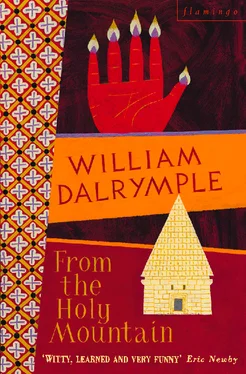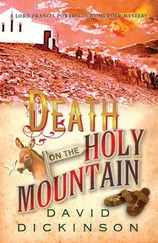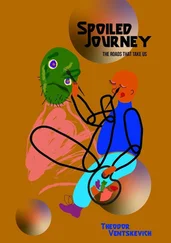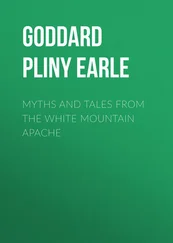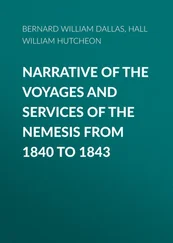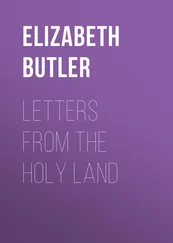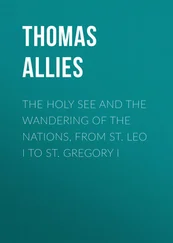Few who were brought up in this most cosmopolitan and sophisticated of cities could bear to leave it for long. ‘Oh, land of Byzantium, oh thrice-happy city, eye of the universe, ornament of the world, star shining afar, beacon of this lower world,’ wrote a twelfth-century Byzantine author forced to absent himself on a diplomatic mission, ‘would that I were within you, enjoying you to the full! Do not part me from your maternal bosom.’
After its fall to the Turks in 1453 the importance of the city was, if anything, increased. For the next two hundred years the Ottoman Empire was the most powerful force in all Eurasia, and Constantinople again became the Mediterranean’s greatest port. The sixteenth-century Grand Vizier Mehmed Sokollu Pasha simultaneously planned canals between the Don and the Volga, and the Red Sea and the Mediterranean; one day he might send armaments to Sumatra to thwart the Portuguese, the next choose a new King of Poland to thwart the Russians. He ordered pictures and clocks from Venice, decorated his capital with one of the most beautiful mosques ever built, and commissioned an eleven-arched bridge over the River Drina which was only recently destroyed by Croatian bombs.
The achievements of early Ottoman Constantinople were built on the foundation of religious and ethnic tolerance. The great majority of senior Ottoman officials were not ethnic Turks, but Christian or Jewish converts. At a time when every capital in Europe was ablaze with burning heretics, according to the exiled seventeenth-century Huguenot M. de la Motraye there was ‘no country on earth where the exercise of all Religions is more free and less subject to being troubled, than in Turkey’. It was the gradual erosion of that tradition of tolerance under the tidal wave of nineteenth-century nationalism that as much as anything finally brought down the Ottomans.
The end result of that sterile hardening of attitudes is that Istanbul, once home to an inspirational ferment of different ethnicities, is today a culturally barren and financially impoverished mono-ethnic megalopolis, 99 per cent Turkish. The Jews have gone to Israel, the Greeks to Athens, the Armenians to Armenia and the United States. The great European merchant houses have returned home, the embassies and the politicians moved to Ankara. For all its magnificent monuments, for the first time in two millennia, Istanbul now feels almost provincial.
It is ten years since my last visit to this city. Since then much has changed: many of the old wooden houses with their intricately latticed balconies have been swept away and replaced by grey apartment blocks. A smart new tram rattles around Sultanahmet, past new flotillas of Russians squatting on the pavements trying to sell their sad piles of Soviet junk: shapeless jeans, hideous shirts and sub-standard leather jackets. There is a blight of seedy news-stands filled with a surprising profusion of Turkish hard porn (there is even a glossy called Harem; one notices these things after a week in the celibate purity of Athos). The most striking change of all, however, is the rise of the Islamic right, which this sort of thing has helped to bring about. On every wall are election posters for the hardline Refah party, which recently won the municipal elections both here and in Ankara; there is now serious talk of them sweeping into power nationally at the next election. In the meantime many of the young men have taken to wearing thick, moustacheless Islamic beards, while their womenfolk are increasingly shrouded in veils.
In many ways, Turkey’s development since the Second World War seems to have followed exactly the opposite course to that of India. There Gandhi tried to wean the whole country onto dhotis , non-violence and spinning wheels; the result was crass materialism and the almost daily burning of brides in ‘kitchen accidents’ if they fail to deliver the new moped or colour television promised as dowry. In Turkey Ataturk tried the reverse approach: he banned the fez, outlawed the Arabic script and tried to drag the Turks kicking and screaming into Europe. The result: a resurgent Islamic movement, mullahs being cheered in the mosques whenever they announce that the earth is flat, and the sophisticated career women of Istanbul competing with each other to wear the most all-enveloping veil or medieval-looking burkha .
This afternoon I walked along the Golden Horn to the Phanar, the oldest surviving institution in the city and the nearest thing the Greek Orthodox have to a Vatican. For in a series of humble buildings surrounded by a modest walled enclosure in Istanbul’s backstreets lives the successor of St John Chrysostom, the senior Patriarch to millions of Orthodox Christians around the world.
The Patriarch’s secretary, to whom Fr. Christophoros had given me an introduction, was out. So while I waited for him to return I drank tea in a small, dark chayhane nearby: sawdust on the floor, the acid stink of cheap Turkish cigarettes stinging the nostrils, the incessant thump of heavy hands on wooden card-tables; unshaven, unemployed men playing game after game of poker. Outside a man in a waistcoat, flat cap and dirty apron pushed a handcart of fruit along the cobbles. It could have been a Bill Brandt photograph of the London East End in the thirties.
I walked back to the Phanar an hour later. The Patriarch’s secretary had still not returned, but this time I did manage to speak to a member of his staff. Fr. Dimitrios was initially suspicious and evasive, but after reading Fr. Christophoros’s letter he took me up to his office overlooking the Patriarchal church. There we talked about the city’s dwindling Greek minority, the last descendants of the Byzantines left in what was once their capital city.
According to Fr. Dimitrios the population of Istanbul was still almost 50 per cent Christian at the end of the nineteenth century. The tumultuous events of the first quarter of the twentieth century – the fall of the Ottoman Empire, the Turkish victory in the 1922 Greco-Turkish War and the expulsion of all the Greeks in Anatolia in exchange for the Turkish population evicted from Northern Greece – did not alter this. By the terms of the 1923 Treaty of Lausanne, the 400,000 Greeks in the city and its suburbs were specifically allowed to remain in their homes with their rights and property intact.
All this changed in 1955 when Istanbul played host to the worst race riot in Europe since Kristallnacht . In a single night, with the police looking on, thousands of hired thugs descended on the city’s Hellenic ghettos. Almost every Greek shop in the city had its windows broken; cemeteries were desecrated; the Tombs of the Patriarchs were destroyed; seventy-three Orthodox churches were gutted.
‘I was still a baby,’ said Fr. Dimitrios. ‘The rioters came into our house, but my mother had wrapped me up in the Turkish flag so the rioters did not harm me; instead they just broke the windows and the furniture then moved on. Afterwards the government said it was just a few ignorant people, but that’s not true: the riots were very well organised, all over Istanbul.’
‘I don’t understand what the Turks would gain by organising such a pogrom,’ I said.
‘The Greeks still controlled the commerce of the city,’ replied Dimitrios. ‘They wanted to drive us out and take over our business. They succeeded. By 1965, when I was ten, the Greek population had sunk to around seventy-five thousand. Today there are only – what? – five thousand Greeks left. All my childhood friends, everyone I grew up with, they’ve all moved away.’
Dimitrios shrugged his shoulders.
‘I love this city, of course: it is my home. But frankly life is impossible here if you are not a Turk. The boys get abused on their military service; they are always sent to the most dangerous postings on the Kurdish front line. Then afterwards, when they come out, they can’t get government jobs. If you live here you have to spend your life pretending you are Turkish. Those Greeks who have stayed have started calling themselves Turkish names: if you’re called Dimitrios, you change your name to Demir; if your name is Fedon, you ask your friends to call you Feridun.’
Читать дальше
